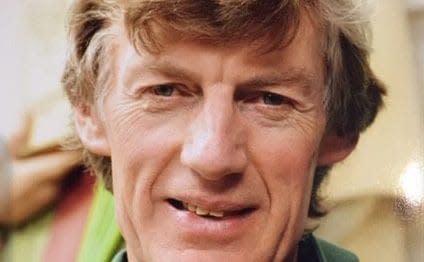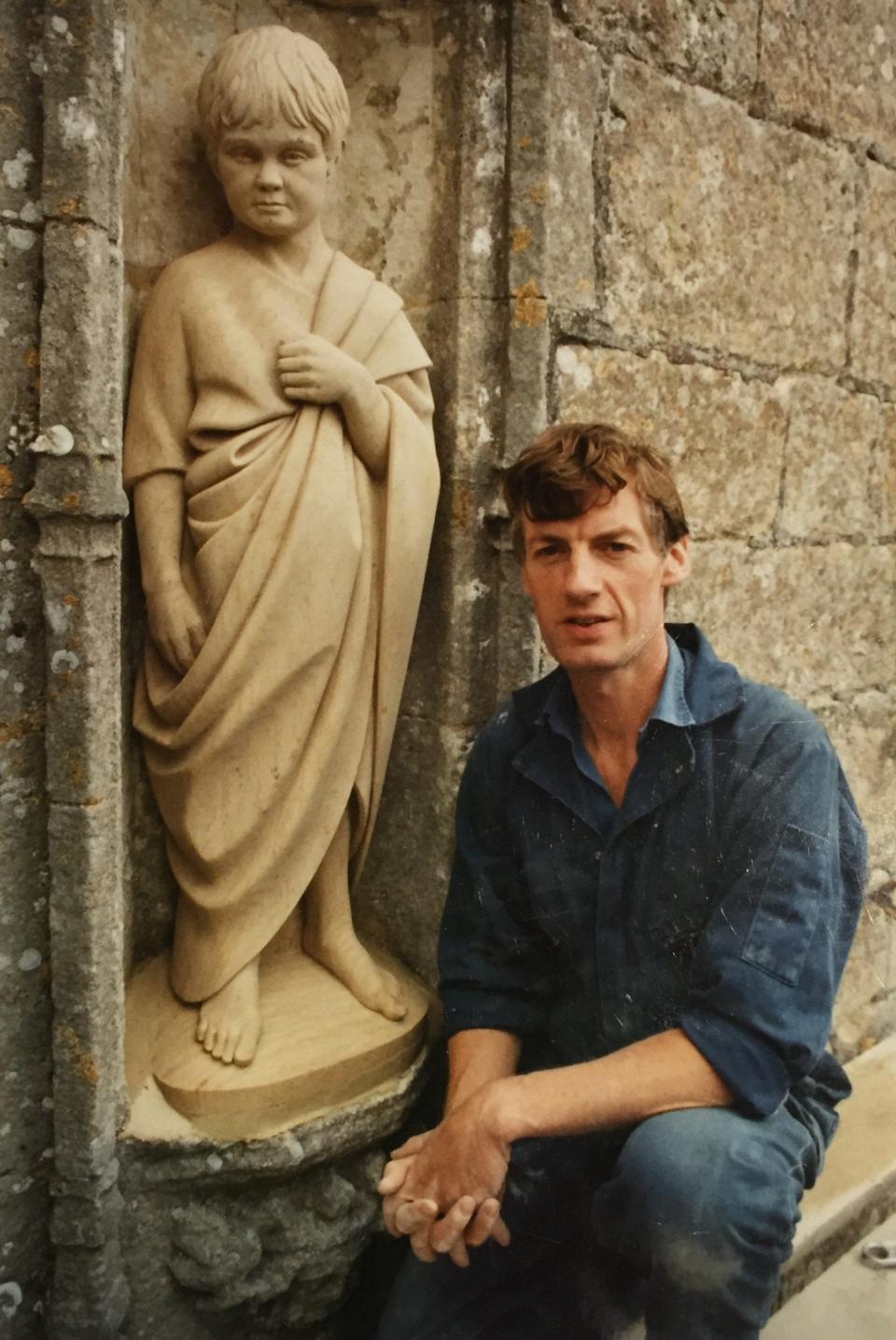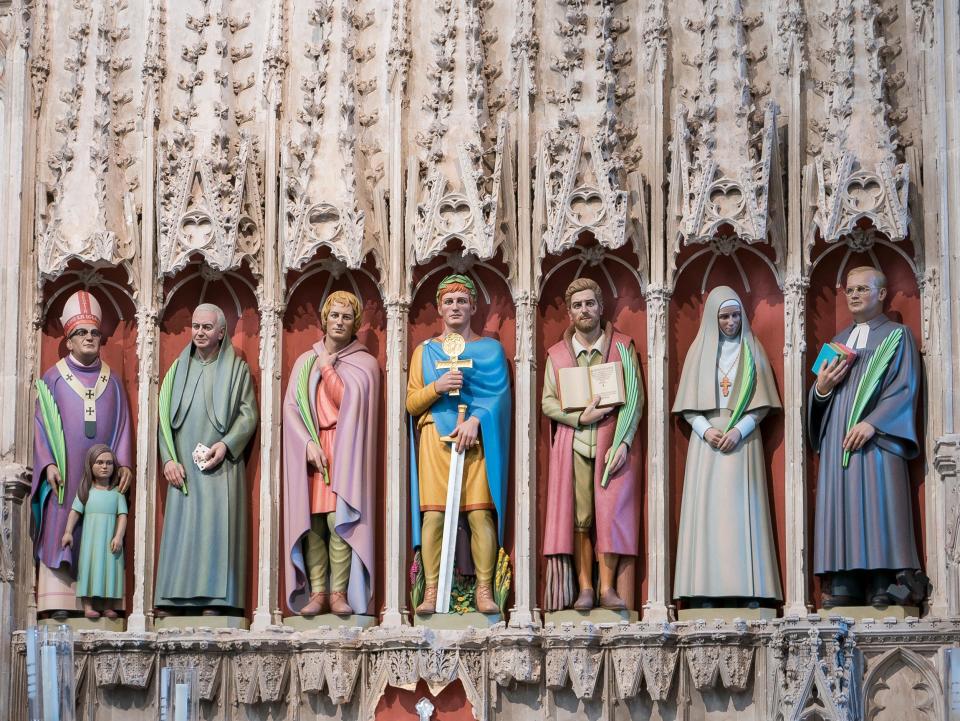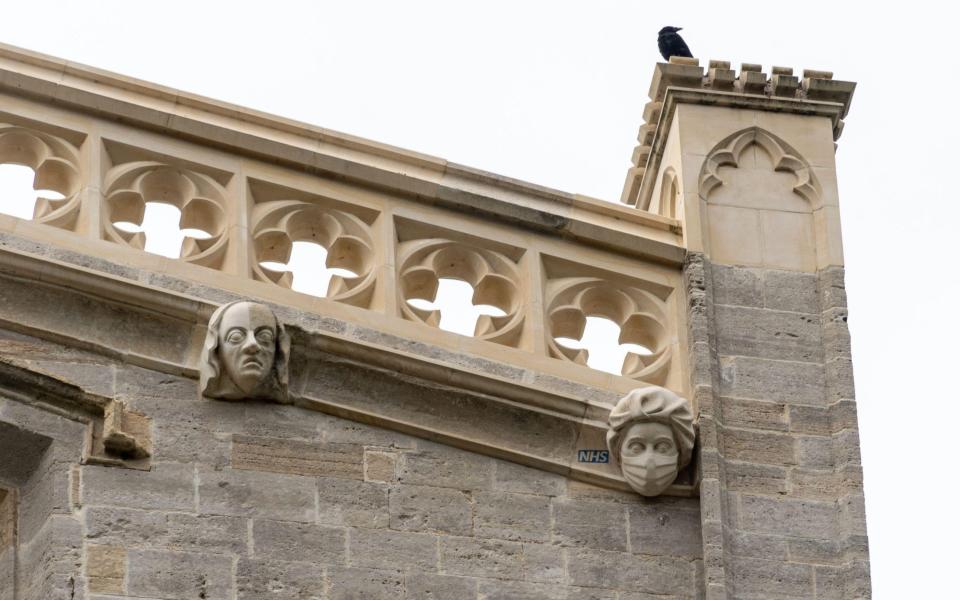Rory Young, artisan and sculptor whose restoration works breathed new life into medieval buildings – obituary
- Oops!Something went wrong.Please try again later.

Rory Young, who has died aged 68, was a painter by training who practised as a craftsman before becoming a celebrated sculptor.
Born on March 7 1954, he grew up at College Farm, Cirencester, learning from Jill, his artist mother, and from his father Peter, who took the young Rory with him to repair dry stone walls. After a grounding in observational painting and drawing at Camberwell College of Art, Rory embarked on a tour of Britain over two years in an improvised camper van, writing down each day’s discoveries in his diaries – the start of a lifetime discipline.
Young met Marcus Stapleton Martin, who had restored Norbury Old Manor, a medieval house in Derbyshire, and he commissioned Young to add a 17th century-style brick gazebo with a carved stone doorcase to the garden. Other commissions followed. More demanding was the radical repair of Gornal Ground, near Millom, Cumbria, an abandoned vernacular farmhouse; it was another two-year project, this time working with a fellow craftsman, the building conservationist Ian Constantinides.
Inspired by Robert and Eve Baker’s conservation and renewal work on the west front of Wells Cathedral, Young learnt to use building lime, becoming an evangelist in teaching and promoting its use. At the 16th century merchant’s house Laws Close in Kirkcaldy High Street, Fife, working for months on the scaffolding alongside local builders Young showed how the carapace of cement render that had become customary in Scotland could be replaced by glowing limewash on stone.

Back in Gloucestershire, he led the return to lime plastering and lime-washing in place of what he called “the Cotswold caveman style” of exposing stone work that had never been intended to be seen in the raw.
In Cirencester, he transformed a humble Victorian townhouse into a workshop and residence, richly coloured and layered with objects – pictures, ceramics, books and antiquarian curiosities. Between long bouts of labour, adventurous foreign travel in search of buildings, and requests to lecture or conduct lime sessions, Young was lavish in his hospitality, giving winter Sunday slide-shows he called “Armchair Travel”.
Scholars from the Society for the Protection of Ancient Buildings (SPAB), working their journeyman route round Britain on their way to becoming leading conservation architects and artisans, annually spent weeks learning at his side. Any building visit with him was a lesson in identifying materials and appreciating workmanship and design.
This would have been a substantial achievement in itself, but when in 1994 funds were given to York Minster for a reconstruction of the carving around the Great West Door, Young won the competition to model groups of figures, following a complex iconography from Genesis, although the actual carving was executed by the Minster stoneyard.
He recalled: “When I started the York Minster models I was blind as to what I could achieve… Only by persisting, concentrating and connecting with the work could I excel beyond my wildest expectations.”

It was a tightrope of taste from which others might have fallen, and he rose above the oppressive weight of officialdom. His historical knowledge, insight and sincerity created something of physical and spiritual delicacy, something that avoided both pastiche and discordant modernism.
Sculpture was henceforth woven into the already-rich mixture of his working life (which he would refer to as a texture or textile), with requests to fill niches left empty since the iconoclasm of the Puritans.
Most taxing yet triumphant was the Seven Martyrs, for the Rood Screen of St Albans Cathedral, where the donor insisted the figures should be coloured, as they would historically have been.
“I really did nearly burn up one of my nine lives on that,” he told a reporter, “working crazy hours to achieve what I wanted. I wanted to take these to a great level of realism. I was painting them, so that was a complete departure; nobody had done anything like this in my lifetime.”

Other sculptures can be seen at Southwell Minster, Gloucester Cathedral, and SS Peter and St Paul, Wolverhampton. At Christchurch Priory he replaced weatherworn grotesques and gargoyles, including, in 2020, a masked nurse to celebrate the NHS.
Young was a member of the Fabric Advisory Committees for St Paul’s Cathedral and Worcester Cathedral. He joined the Art Workers’ Guild in 1985, making new friendships among fellow artist-makers.
He married, in 1986, the sculptor Jane Rickards, but this did not last. Later, he enjoyed the companionship of Judith Verity, an artist and counsellor.
Diagnosed with stage four cancer in March 2022, Young chose to live his remaining time to the fullest rather than undergo treatment. He curated these last months with generosity and exuberance, holding a summer garden party with the motto “Carpe Diem”, and a week-long revolving house party at Norbury.
His papers, photographs and drawings were deposited at Gloucestershire Archives. A long audio interview has been recorded for the National Life Stories Collection, and the historic buildings expert Marianne Suhr filmed him touring his house and discussing his life and work.
His sister Katrina survives him.
Rory Young, born March 7 1954, died February 23 2023

